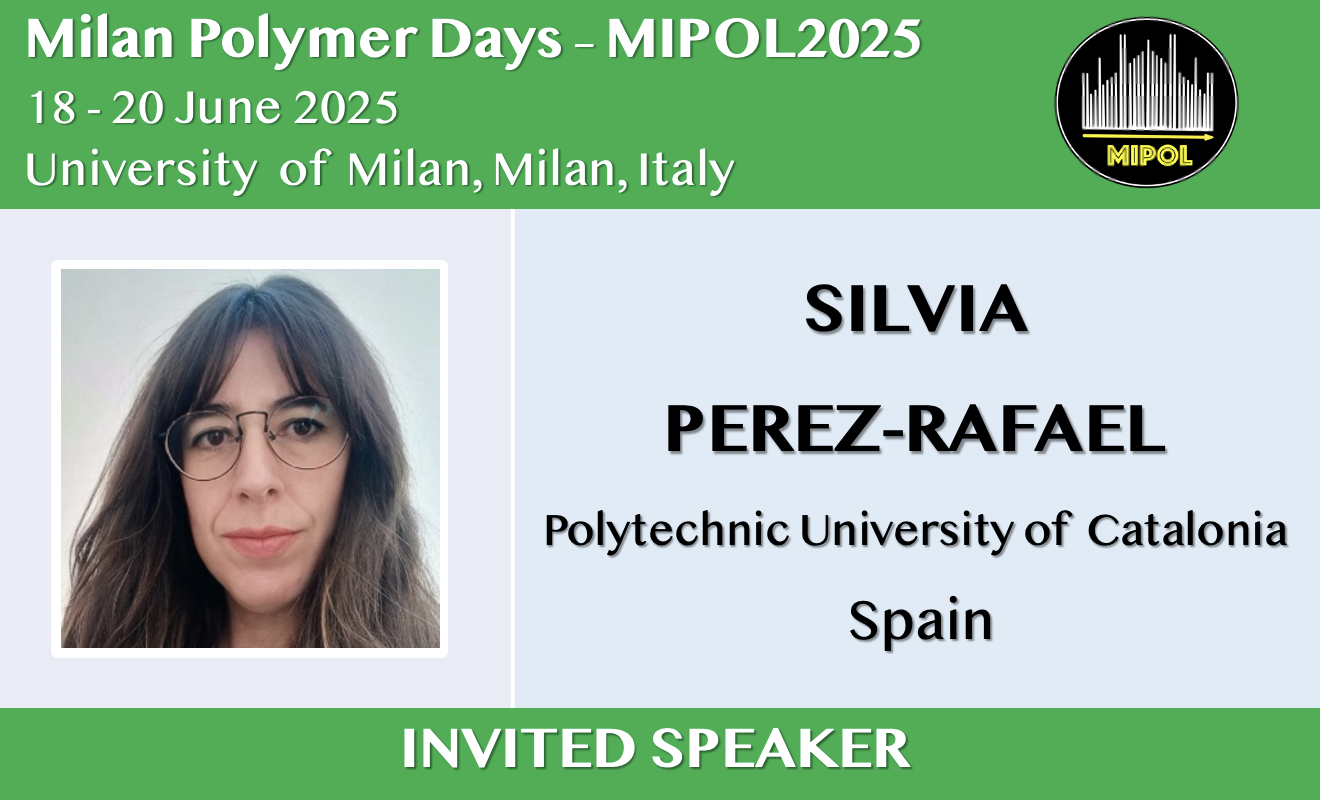Biomass-derived polymers and their valorization for eco-friendly material design
Abstract

The extensive use of petroleum-derived polymers has raised significant concerns due to their persistence in ecosystems, limited recyclability, and contribution to waste pollution. As global awareness of sustainability increases, there is a growing demand for biodegradable polymers and recyclable materials to mitigate the environmental impact of conventional polymeric materials such as plastics, foams, synthetic textiles, disposable packaging, and insulation materials. In recent years, biodegradable polymers have demonstrated significant potential in various fields. For instance, they have been successfully implemented in medical devices like bioresorbable sutures [1] (e.g. polyglycolic acid, PGA) and stents (e.g. poly(lactic-co-glycolic acid, PLGA), which gradually degrade in the body over time, reducing the need for surgical removal. In industrial applications, biodegradable polymers like polylactic acid (PLA) and polyhydroxyalkanoates (PHA) are increasingly used in e.g., compostable packaging materials or disposable tableware, offering a more sustainable alternative. However, taking a step further, the utilization of polymers derived from biomass waste offers an even greater opportunity for the development of eco-friendly polymeric materials, aligning with the principles of sustainability and circular economy. This research explores innovative strategies to transform biomass-derived polymeric components into high-value materials for industrial and biomedical applications. Three case studies are presented: (i) the use of lignin nanoparticles for the fabrication of foams and hydrogels [2-4], leveraging their unique structural and functional properties for advanced material applications; (ii) the hydrophobization of hemp powder to develop bio-based foams with enhanced water resistance and mechanical stability [5]; and (iii) the formulation of PHAs for advanced multi-layered transdermal drug delivery systems, demonstrating their potential as biodegradable and biocompatible materials in biomedical field. In addition to presenting a wide range of biopolymers and biomolecules derived from natural and renewable sources, this study explores advanced polymer processing techniques such as ultrasound molding, nanotexturization, plasma treatment, and laser ablation to enhance material performance. By integrating polymer science with waste-to-product strategies and eco-design principles, this approach has the potential to replace fossil-based materials with bio-based polymers while fostering sustainability and innovation in material science.
References
- Y. Márquez, T. Cabral, A. Lorenzetti, L. Franco, P. Turon, L.J. del Valle, J. Puiggalí Mater. Sci. Engin. C 2017, 71, 629.
- S. Pérez-Rafael, G. Ferreres, R.W. Kessler, W. Kessler, J. Blair, G. Rathee, A.G. Morena, T.Tzanov Ultrason. Sonochem. 2023, 98.
- S. Pérez-Rafael, K. Ivanova, I. Stefanov, J. Puiggalí, L.J. del Valle, K. Todorova, P. Dimitrov, D. Hinojosa-Caballero, T.Tzanov Acta Biomaterialia, 2021, 134, 131.
- A. Gala Morena, I. Stefanov, K. Ivanova, S. Pérez-Rafael, M. Sánchez Soto, T. Tzanov Ind. Eng. Chem. Res. 2020, 59, 4504.
- G. Ferreres, S.Pérez-Rafael, A.G. Morena, T.Tzanov, L. Gryschchuk Polymers, 2023, 15.
Acknowledgments
This research was funded by the Spanish Ministry of Science, Innovation and Universities through PID2022-140302OB-I00 and CPP2022-009584, and by the Generalitat de Catalunya under the project 2021-SGR-01042. This work is part of Maria de Maeztu Units of Excellence Programme CEX2023-001300-M/funded by MCIN/AEI/10.13039/501100011033.

